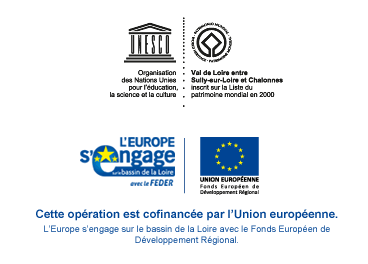- Home
- Know
- A la carte
- The vegetable economy
The vegetable economy
Published on 13 April 2017 - Updated 16 November 2018
Vegetation engineering in Anjou, high-level specialised knowhow

To the north, in La Ménitré, the train passes a large factory; it’s the Vilmorin factory, where a wealth of technical expertise is put at the service of plant seeds. Vilmorin, 750 employees who produce vegetable seeds and more besides.
“What you see nearest the railway line are our drying and packaging buildings, mainly for tree seeds, right by the line. Further off, you can see our offices and the largest building, which is for vegetable seeds.”
Guy Sancey, former Director of Tree Seeds at Vilmorin, the world’s fourth largest seed company.
“There are several buildings; there’s one for storing and drying conifer cones coming in from our orchards and plantations – areas of trees selected for seed production; there are orchards where we produce and harvest by climbing, and cones have to be dried before seeds are extracted. We harvest between 5 and 10 tons of cones or so a year.”
A cone is the fruit of a conifer, a pinecone.
“Then the cones open up; they’re put into an enormous cylinder where they’re stirred around and the seeds fall out; they’re harvested on a belt and put into cold storage before marketing.”
They create new varieties here – conifers, broad-leaved trees, ornamental trees and rootstock fruit trees. Vilmorin engineers work with INRA and other institutes to produce hybrids – in other words, inter-crossing varieties and selecting the best representatives of each line; patient work as it bears on successive generations of trees.
“What’s the point of selection? With maritime pine for one, selection gives us several advantages; in the first place, it improves productivity, and it also provides better quality of wood. Productivity as regards rapidity of growth is very important – for example, with a non-selected population you had to wait 70 years before harvesting, now you can harvest in 40 with the same production volume and the same quality; you gain 30 years, which is enormous.”
Vilmorin is the heir to a regional tradition and knowhow that dates back to the 19th century.

![Nouvelles Renaissance(s] 2023](/var/storage/images/val-de-loire-refonte/dossier-de-parametrage/pied-de-page/nouvelles-renaissance-s-2023/517479-13-fre-FR/Nouvelles-Renaissance-s-2023_image_largeur220.png)


 Lettre d'information
Lettre d'information
 Facebook
Facebook
 Flickr
Flickr
 Podcloud
Podcloud
 Dailymotion
Dailymotion
 Box
Box
 Slideshare
Slideshare
 Diigo
Diigo

